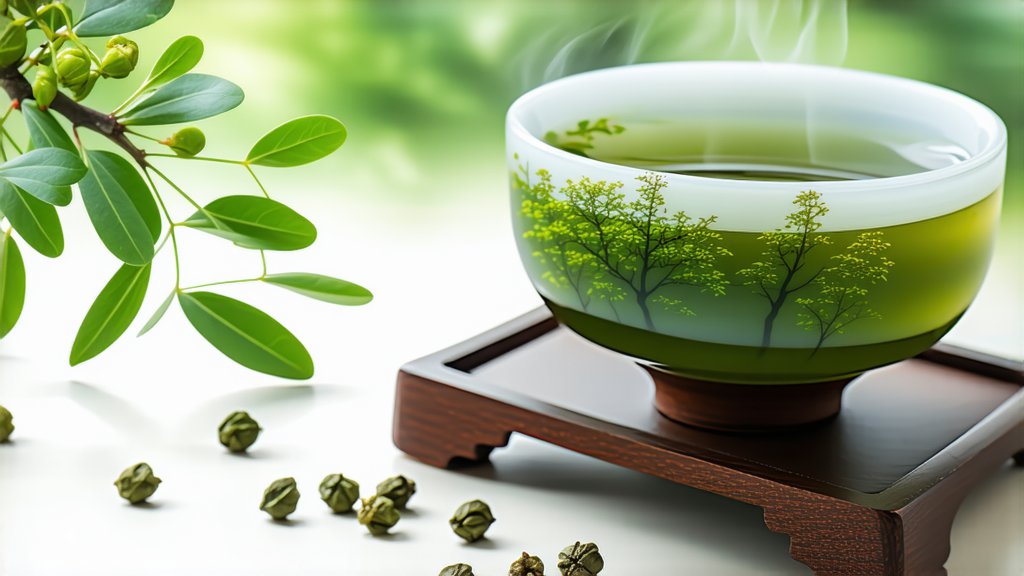
In the vast and diverse tapestry of Chinese tea culture, few varieties capture the imagination quite like Tieguanyin. This exquisite oolong tea, hailing from the lush mountains of Anxi in Fujian Province, has been enchanting tea connoisseurs for centuries. With its rich history, complex flavor profile, and meticulous preparation process, Tieguanyin stands as a testament to the artistry and tradition that define Chinese tea making.
A Glimpse into History
The origins of Tieguanyin can be traced back to the early 18th century during the Qing Dynasty. Legend has it that the tea was discovered by a poor scholar named Wei Yin. According to the tale, Wei Yin found an ancient camellia tree in the Anxi region, and after brewing leaves from this tree, he was so impressed by their quality that he decided to cultivate more. He named the tea "Tieguanyin," which translates to "Iron Goddess of Mercy" or "Iron Buddha," reflecting both the strength and compassionate qualities of the tea.
Over the centuries, Tieguanyin gained immense popularity and became one of the most revered teas in China. Its reputation spread beyond China's borders, finding admirers worldwide who appreciate its unique characteristics and storied past.
Varieties and Characteristics
Tieguanyin is primarily grown in two regions of Fujian Province: Anxi and Fuzhou. While there are subtle differences between these regional varieties, they share common traits that distinguish them from other types of oolong tea.
Anxi Tieguanyin is perhaps the most well-known and widely regarded variety. It is characterized by its tightly rolled pellets, which resemble green peas when dry. The leaves unfurl to reveal a vibrant green hue, indicative of their freshness and high-quality processing.
Fuzhou Tieguanyin, on the other hand, tends to have a slightly different shape and flavor profile. The leaves are often more slender and twisted, resulting in a lighter, more floral aroma compared to the robust, creamy notes typical of Anxi Tieguanyin.
Both varieties offer a complex interplay of flavors, including floral, fruity, and roasted elements, along with a distinctive mineral undertone. These nuanced flavors make Tieguanyin a favorite among those seeking a multifaceted tea experience.
The Art of Tieguanyin Production
The production of Tieguanyin is an intricate process that requires skill, precision, and a deep understanding of the tea plant's needs. Here's a closer look at the steps involved in creating this exceptional tea:
-
Harvesting: The best leaves for Tieguanyin are plucked during the spring and autumn harvests, when the plants are at their peak vitality. Only the top two or three leaves and the bud are selected, ensuring the highest quality.
-
Withering: After picking, the leaves undergo a withering process to reduce moisture content. This step is crucial for developing the tea's unique aroma and flavor. The leaves are spread out in thin layers to air dry under shade, allowing natural enzyme activity to begin.
-
Tossing and Turning: One of the most distinctive aspects of Tieguanyin production is the tossing and turning technique. The leaves are continuously tossed in large woks over high heat to halt oxidation while simultaneously shaping the leaves. This process also helps to release the tea's essential oils, contributing to its rich aroma.
-
Fixation: Once the desired level of oxidation is achieved, the leaves are quickly fixed by heating them to kill the enzymes that would otherwise continue to break down the leaves' cellular structure. This step ensures that the tea retains its greenish color and fresh taste.
-
Rolling and Shaping: After fixation, the leaves are rolled into tight pellets. This not only gives Tieguanyin its characteristic shape but also helps to concentrate its flavor.
-
Drying: Finally, the shaped leaves are dried to remove any remaining moisture, further enhancing their shelf life and preserving their delicate flavors.
Each stage of this process demands careful attention and expertise, ensuring that every batch of Tieguanyin meets the high standards expected by tea enthusiasts around the world.
The Ceremony of Enjoyment
To truly appreciate Tieguanyin, one must engage in the traditional Chinese tea ceremony. This ritualistic practice not only enhances the enjoyment of the tea but also connects drinkers to centuries-old customs and philosophies.
-
Preparation: Begin by selecting a suitable gaiwan (a traditional Chinese teapot with a lid and no handle) and a matching cup. Rinse the gaiwan with hot water to warm it up and remove any impurities.
-
Measuring: Use a tea scoop to measure approximately 5 grams of Tieguanyin leaves per 100ml of water. Place the leaves into the warmed gaiwan.
-
Brewing: Pour boiling water (around 95-100°C or 203-212°F) over the leaves, covering the gaiwan with its lid. Steep for about 30 seconds for the first infusion. Subsequent infusions can be steeped for slightly longer periods, typically adding 10-15 seconds per infusion.
-
Pouring: When the tea has finished steeping, pour it into a fairness cup (a small pitcher used to even out tea strength) to ensure each serving is consistent. Then, pour the tea into individual cups, leaving a bit of liquid in the gaiwan for subsequent infusions.
-
Smelling and Tasting: Before drinking, take a moment to appreciate the aroma of the tea. Sip slowly, allowing the flavors to unfold on your palate. Notice the balance between sweetness, bitterness, and umami, as well as the tea's smooth texture and lasting finish.
The act of preparing and consuming Tieguanyin is a meditative experience that encourages mindfulness and appreciation for the present moment. It is a practice that transcends mere consumption, inviting participants to connect with nature, tradition, and themselves.
Conclusion
Tieguanyin is more than just a tea; it is a cultural icon that embodies the essence of Chinese tea making. From its storied history to its meticulous production process and ceremonial preparation, Tieguanyin offers a window into the rich heritage and artistry of Chinese tea culture. Whether you are a seasoned tea drinker or a curious newcomer, exploring the world of fine teas, Tieguanyin invites you to embark on a sensory journey that delights and inspires.